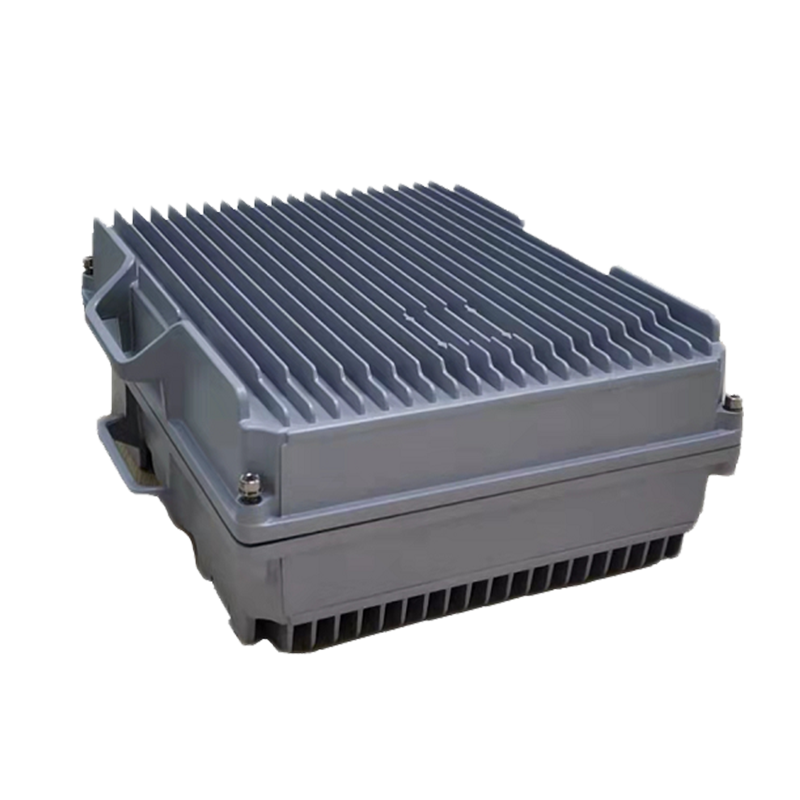1550nm Optical Transmitter: High-Performance Signal Transmission for Modern Networks
The 1550nm optical transmitter plays a crucial role in fiber-optic communication networks, offering high-performance signal transmission over long distances with minimal loss. This device operates at the 1550nm wavelength, which is ideal for long-haul communications due to its low attenuation and compatibility with optical amplification technologies such as Erbium-Doped Fiber Amplifiers (EDFAs). As the backbone of modern telecommunications and data networks, the 1550nm optical transmitter is designed to meet the increasing demand for high-speed, high-capacity data transmission.
The 1550nm wavelength is widely recognized as the optimal frequency for long-distance optical communication. This wavelength falls within the third transmission window, where fiber-optic cables exhibit the lowest attenuation, typically around 0.2 dB/km. This low attenuation ensures that the signal can travel greater distances without significant power loss, making it an ideal choice for long-haul applications such as intercity, regional, or international data transmission.
Additionally, the 1550nm wavelength aligns with the gain profile of EDFAs, which provide optical amplification without converting the signal back to electrical form. This compatibility allows network operators to amplify the signal at intermediate points along the transmission path, extending the reach of the network without degrading signal quality.

One of the defining characteristics of a 1550nm optical transmitter is its high output power, which enables strong signal transmission over extended distances. By utilizing advanced laser technology, these transmitters are capable of delivering high power levels, ensuring that the signal remains strong even after passing through kilometers of fiber-optic cable.
In addition to high power output, 1550nm optical transmitters are designed for energy efficiency, consuming less power compared to older transmission technologies. This efficiency is particularly important in large-scale networks, where thousands of optical transmitters may be deployed. Lower energy consumption not only reduces operational costs but also minimizes the environmental impact of large data centers and telecommunications infrastructure.
Maintaining signal integrity is crucial in optical communication, and the 1550nm optical transmitter excels in delivering low-noise, distortion-free signals. This is achieved through precise engineering of the transmitter's laser components and modulation techniques. The low noise figure and minimal distortion ensure that the transmitted signal retains its clarity and quality over long distances, even in the presence of environmental interference or fiber non-linearities.
For applications requiring high-quality video or data transmission, such as cable TV networks, internet service providers, or enterprise data centers, the low noise and high signal-to-noise ratio (SNR) provided by 1550nm optical transmitters are essential for delivering reliable, high-performance services.
A significant advantage of the 1550nm optical transmitter is its compatibility with Wavelength Division Multiplexing (WDM) technology, which allows multiple signals to be transmitted simultaneously over a single fiber-optic cable. By utilizing different wavelengths for each signal, WDM significantly increases the capacity of the network without requiring additional physical infrastructure.
In Dense Wavelength Division Multiplexing (DWDM) systems, the 1550nm wavelength is often used as the base wavelength due to its low attenuation and ease of amplification. This makes 1550nm optical transmitters an essential component of high-capacity networks that need to support multiple data streams, such as in telecommunications, broadband internet, and data center interconnects.
Reliability and stability are paramount in any communication network, and the 1550nm optical transmitter is engineered to deliver consistent performance in a variety of operating conditions. These transmitters are built with robust materials and components that can withstand temperature fluctuations, humidity, and other environmental factors that may affect signal transmission.
Furthermore, 1550nm optical transmitters are equipped with advanced feedback mechanisms to maintain stable output power and wavelength. This ensures that the signal remains stable over time, reducing the likelihood of downtime or degradation in network performance. The high reliability of these transmitters makes them a preferred choice for critical applications, such as emergency communication systems, government networks, and financial institutions.
As data consumption continues to rise, networks must scale to accommodate increasing bandwidth demands. The 1550nm optical transmitter provides a scalable solution that can grow alongside the network. Whether for expanding an existing network or building a new infrastructure, these transmitters offer the flexibility to add more capacity through WDM or by integrating with optical amplifiers.
Additionally, the high output power and low attenuation properties of 1550nm optical transmitters allow network operators to extend their reach without requiring significant changes to the existing infrastructure. This scalability makes 1550nm optical transmitters a future-proof investment for network operators who need to meet the evolving needs of modern communication systems.

















